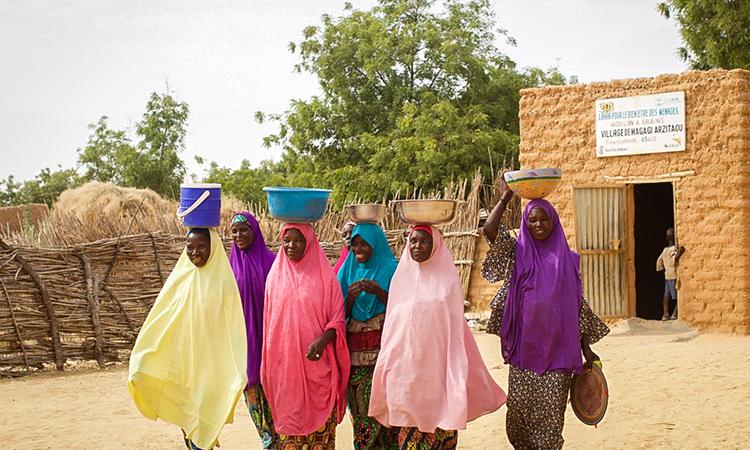
Niger: Farm families find ways to leave hunger, poverty behind
Getting stuck behind a truck loaded down with produce may be irritating, but it’s a common occurrence on rural roads after a harvest. To Sadou Soumana, the slow-moving vehicle ahead of him on the road is freighted with deep meaning. Stacked high with sacks of cowpeas, it carries the hopes and hard work of farmers in Niger’s Maradi region who planted, tended, and harvested the crop.
“In a few hours that truck will be in Nigeria,” he says. “In a few days, people will be eating those cowpeas, and months from now the farmers who grew them may not have enough money to feed their children.”
He sighs and shakes his head at the loss of income and highly nutritious food the truck represents. He explains: “The farmers who sell now, while the market is flooded with cowpeas, are getting a low price per bag. If they could store their crop and sell in maybe five or six months, they could make twice as much or more.”
“It’s not just about money either,” he adds. “With less profit, they may not be able to provide the variety of nutritious foods their children need between now and the next harvest time.”
Sadou is the food security and livelihoods coordinator for World Vision Niger’s LAHIA project in Maradi region. LAHIA is a USAID-Food for Peace-funded program through which World Vision and Save the Children help small farm producers leave hunger and poverty behind. In working with families, communities, and government departments, they directly address issues affecting poverty, debt, malnutrition, and stunting.
Globally, 70 percent of the extreme poor live in rural areas; 60 percent work in agriculture. Extreme poverty is concentrated in sub-Saharan Africa – including Niger.
Four-fifths of Niger’s adults work in agriculture. Most depend on rain-fed crops including millet, sorghum, cowpeas, and groundnuts. Their food supply and income can be wiped out by drought, floods, or insect pests.
The World Bank defines the “extreme poor” as people living on less than $1.90 a day, but there’s more to poverty than low income. People in poverty often lack health services, education, water and sanitation, and natural resources, like land for farming. In Niger, women face social poverty such as discrimination and inequities in resources and culturally are often prevented from making decisions about their own lives, labor, and health.
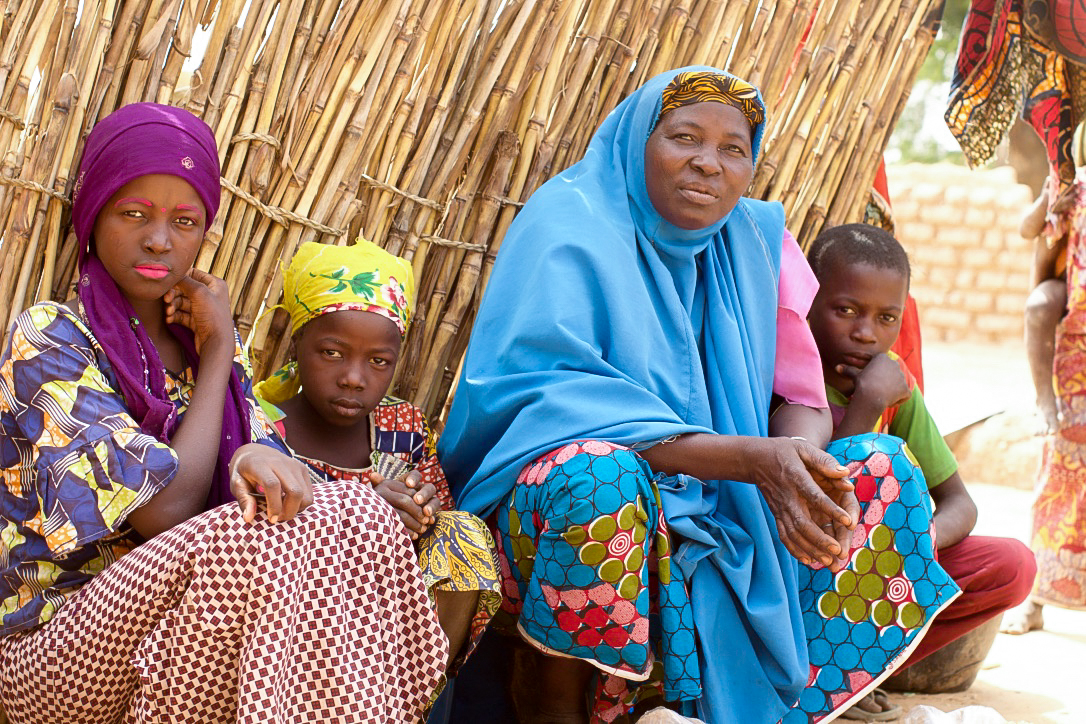
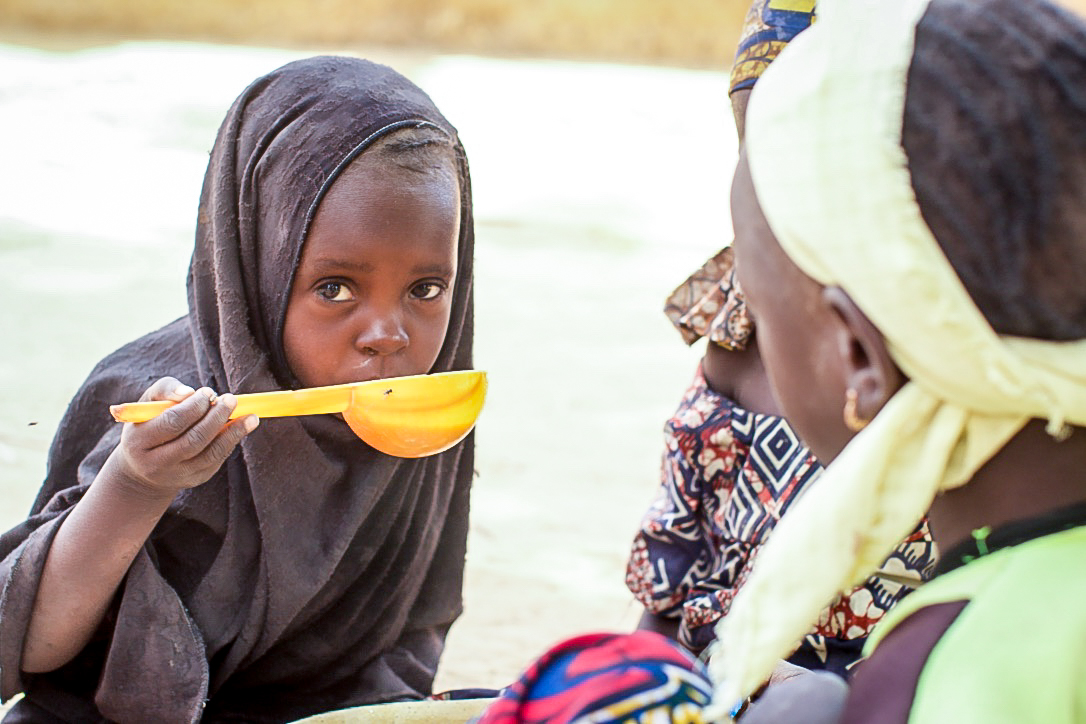
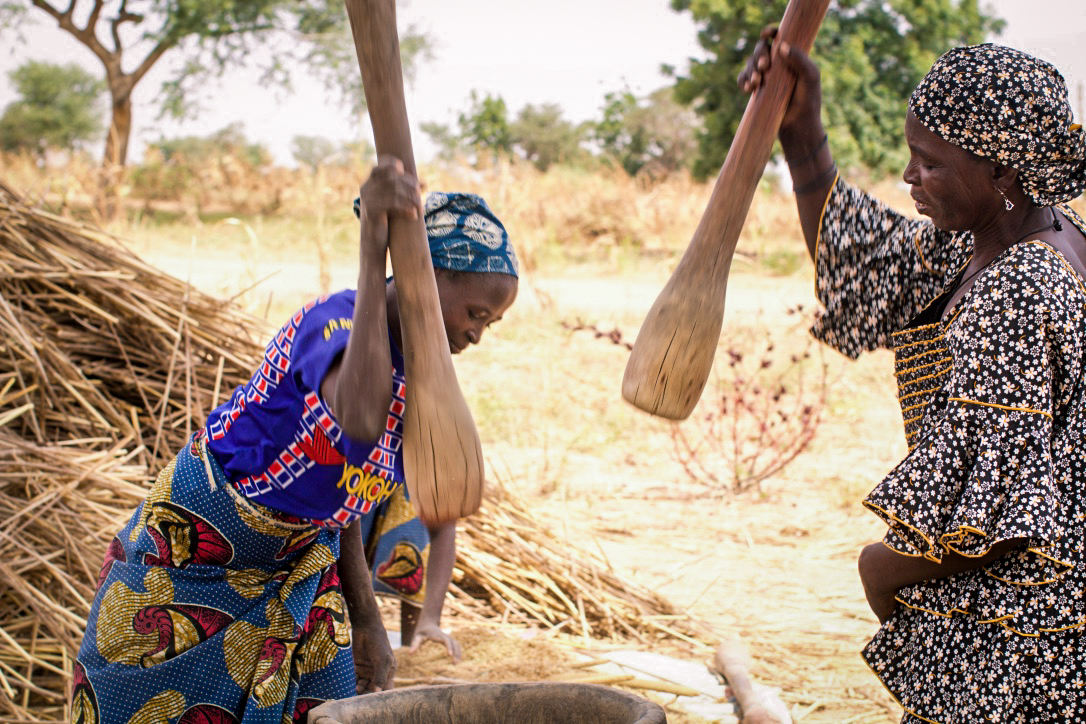



Crops as money in the bank
Hundreds of farmers who participate in the LAHIA program are saving crops and earning more when they sell, just as Sadou described. They store bags of millet, groundnuts and cowpeas in a secure, community-managed warehouse and use them as collateral for a loan from a microfinance bank.
Warrantage, as it’s called, gives farmers access to credit they can use for expenses or to fund an off-season income-generating activity. When the crop price rises, they redeem their bags of groundnuts or cowpeas and sell them at a profit.
Tshara Yahaya, 48, is a big believer in warrantage. She points to bundles of millet that she recently harvested. “Half of this we’ll eat, and half I’ll store to sell later for more money. Right now, the market is flooded,” she says.
She’ll store her bags of millet in a warehouse with crops grown by other women in her savings group in Magagi Arzitaou village. World Vision, the women’s cooperative, and the village development committee combined resources to build the warehouse and a flour mill where women take their grain to be ground.
While her two daughters pound and winnow millet to bag for storage, Tshara serves her grandchildren a hearty lunch of porridge made from her own millet flour with fresh goat milk for added protein.
Tshara’s harvest last year was better than this year’s, and she bought a goat with her loan. She hasn’t decided yet what she’ll do with her loan this year, but she’s glad to have options for building up her assets.
“If it’s not the best year for a crop, that’s when you find other ways to make an income,” Tshara says. She sees a different life ahead for her grandchildren. By the time they are grown, they won’t have to pound millet. She says, “There’ll be a machine by then and we can buy it.”
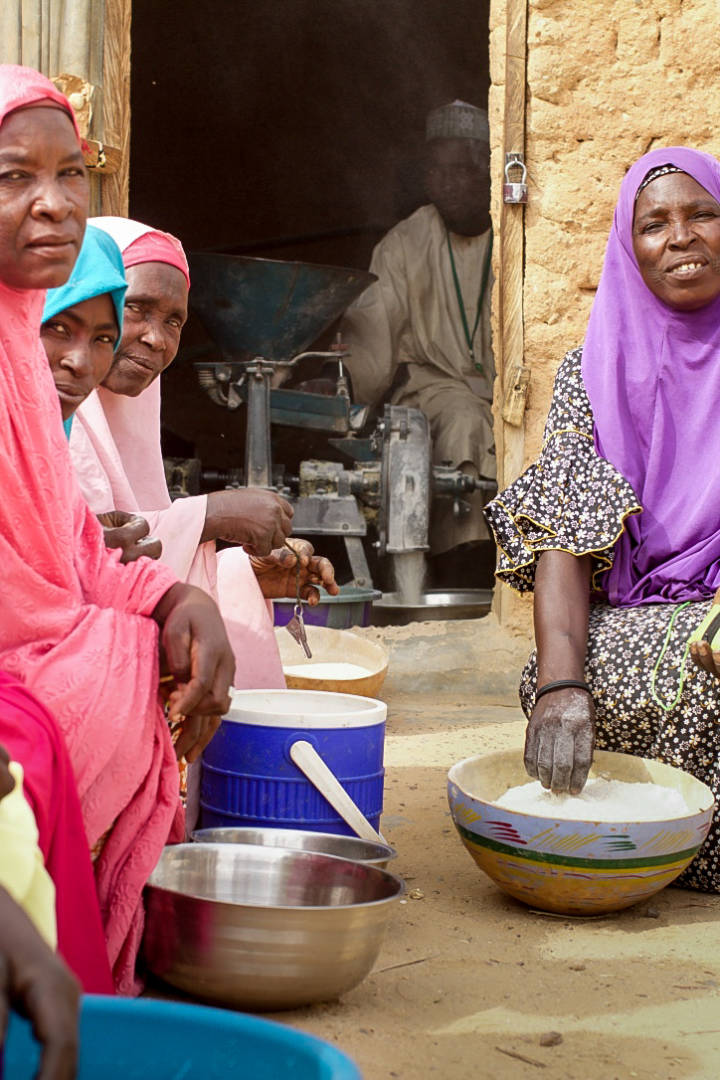
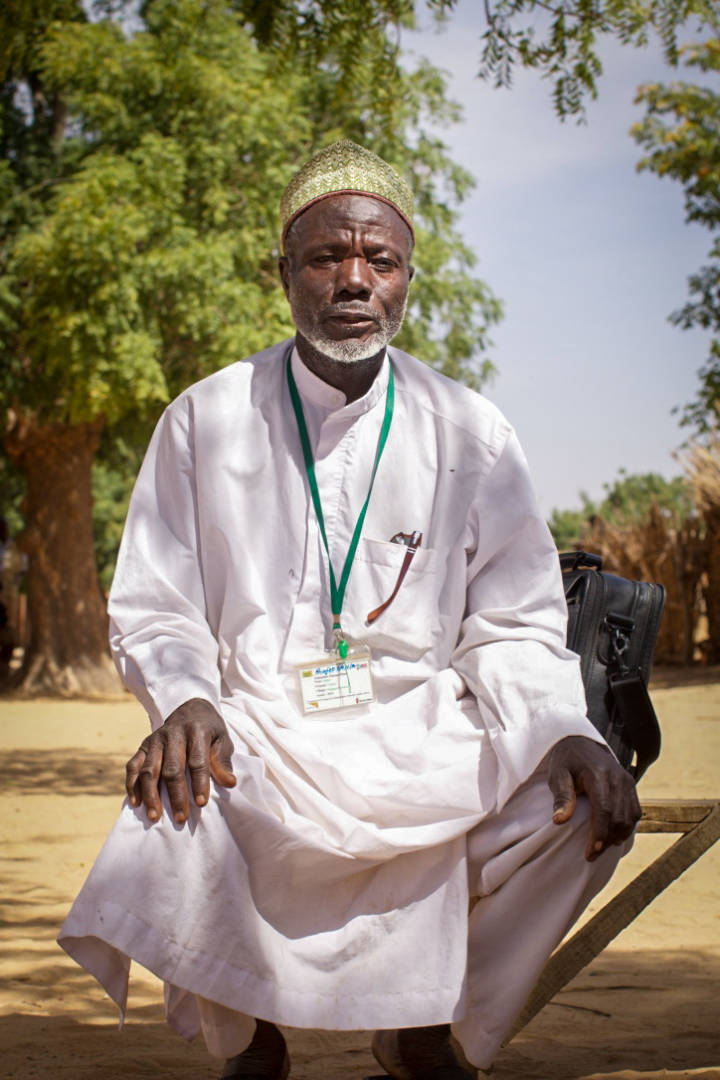
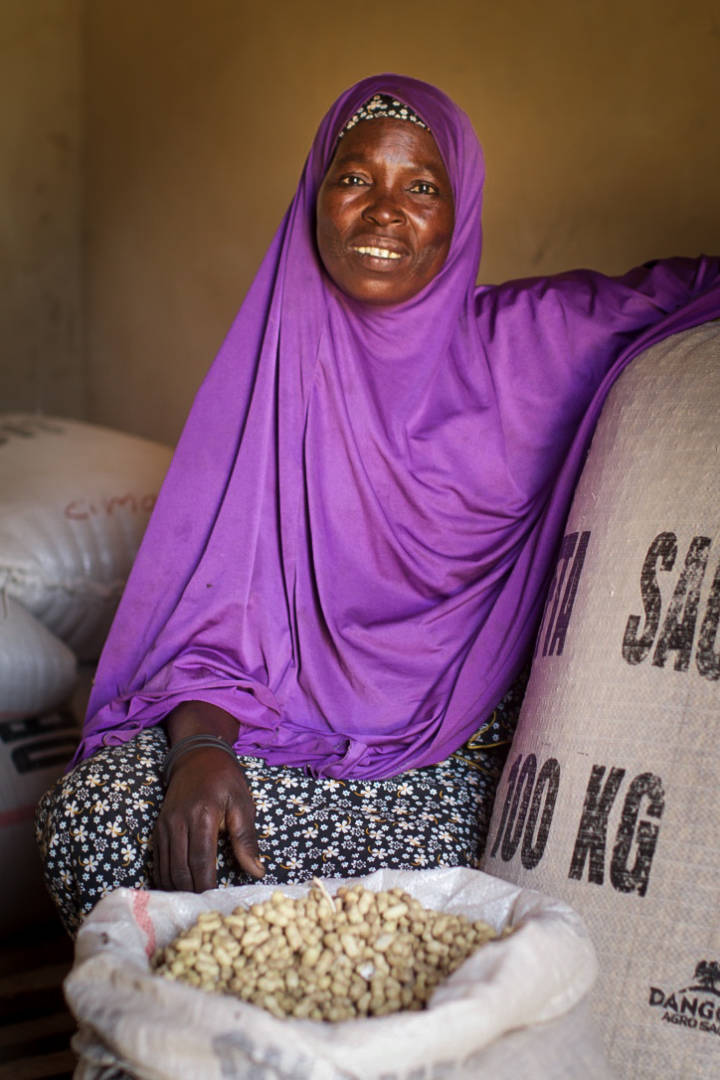



Women tip the scales to end poverty
Tshara’s success and confidence in her abilities as a smallholder farmer are signs of a transformation in gender relations that’s inherent in LAHIA’s programming.
Gender inequality is a key aspect of poverty in rural Niger. Typically, women lack access to land and financing for income-generating activities. Few girls are educated, instead they marry and begin childbearing in their early teens, before their bodies are fully developed.
Early childbearing and the world’s highest birthrate — 7.6 children per woman — lead to households with many mouths to feed as well as long-term poor health and nutrition for moms and children. In a U.N. Development Program study, only 12 percent of women said they participated in household decisions, or even had a say about their own health care.
Female-headed households in Niger are more likely to be in extreme poverty and food insecure. But with equal opportunities through LAHIA, women become effective change agents in their households and communities. Given access to land and financing and the support of a women’s cooperative, they are quick to adopt money-making ideas.
Sitting under shade tree with other women in her savings group, Zara Ousmane, 44, a widow and mother of six, smiles as she rattles off a list of her recent business moves. She leased land to grow millet, put some crops under warrantage and used the proceeds to fatten sheep, then bought more grain to process and sell. She took her groundnuts to another village to be processed for oil and sold the oil and byproducts in the market. (It costs a bit to extract the oil, but it’s much more profitable, she says.) Then she invested in a cow to pull a cart for her farm and a small flock of ducks.
Perhaps the best investments Zara and Tshara made, and one they couldn’t have imagined a few years ago, are the bicycles they bought for their teenage children to ride to secondary school four miles away.
Life will be different for the next generation, says Seydou Yahaya, a 57-year-old elder in the village. “Through LAHIA, we’ve got good water and improved farming and incomes so they don’t experience the sickness and malnutrition we had in the past.”
“They will be educated and have greater access to jobs and markets. They’ll go into business in Maradi city,” he says proudly.
“We didn’t have the same opportunities our children have, but through LAHIA we have learned and changed our lives, and theirs, too.”
This project is made possible by the generous support of the American people through the United States Agency for International Development (USAID). The contents of this article are the responsibility of World Vision, Inc. and do not necessarily reflect the views of USAID or the Unites States Government.